
Cost Centers, Cost Center Groups, Posting Keys & Document Types in SAP FICO
Continuing our journey through the SAP FICO module, we’ll now go into the Cost Center and Cost Center Group. Following that, we’ll explore the fundamental concepts of Posting Keys and Document Types in Financial Accounting.
Thank you for reading this post, don't forget to subscribe!What is a Cost Center in SAP?
A Cost Center is an organizational unit within a controlling area that represents a defined location or department where costs are incurred. In essence, it’s a way to track where money is being spent within an organization. For example, in a company like Greaves, the requirement might be to capture costs department-wise. Cost centers would then be divided into main groups such as:
- Production cost centers
- Service cost centers
- Administration cost centers
- Sales and Distribution cost centers
Transaction Codes for Cost Center Management:
To manage cost centers in SAP, the following transaction codes are used:
- KS01: Create
- KS02: Change
- KS03: Display
Let’s walk through the process of creating a cost center.
How to Create a Cost Center in SAP
You can create a cost center using two primary methods:
- Via SAP Easy Access Menu:
- Navigate to SAP Menu → Accounting → Controlling → Cost Center Accounting → Master Data → Cost Center → Individual Processing.
- From here, select Create (which corresponds to transaction code KS01).
- Direct Transaction Code Entry: Directly enter KS01 in the SAP command field and press Enter.
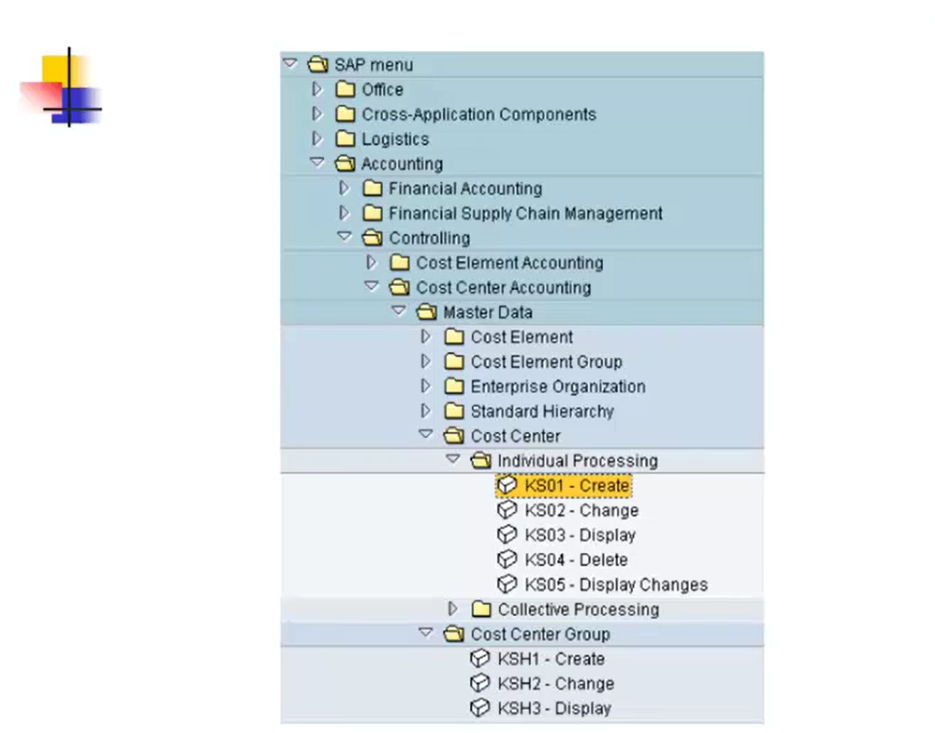
Step-by-Step Cost Center Creation:
Once you initiate the creation process, you’ll get a screen where you’ll be prompted to provide the controlling area.
- Provide Controlling Area: Enter the controlling area and press Enter or click the “Continue” button.
- Enter Cost Center Details and Validity Dates: A new screen will appear where you need to provide the cost center number, its name, a description, and also define its validity period (From Date to To Date).
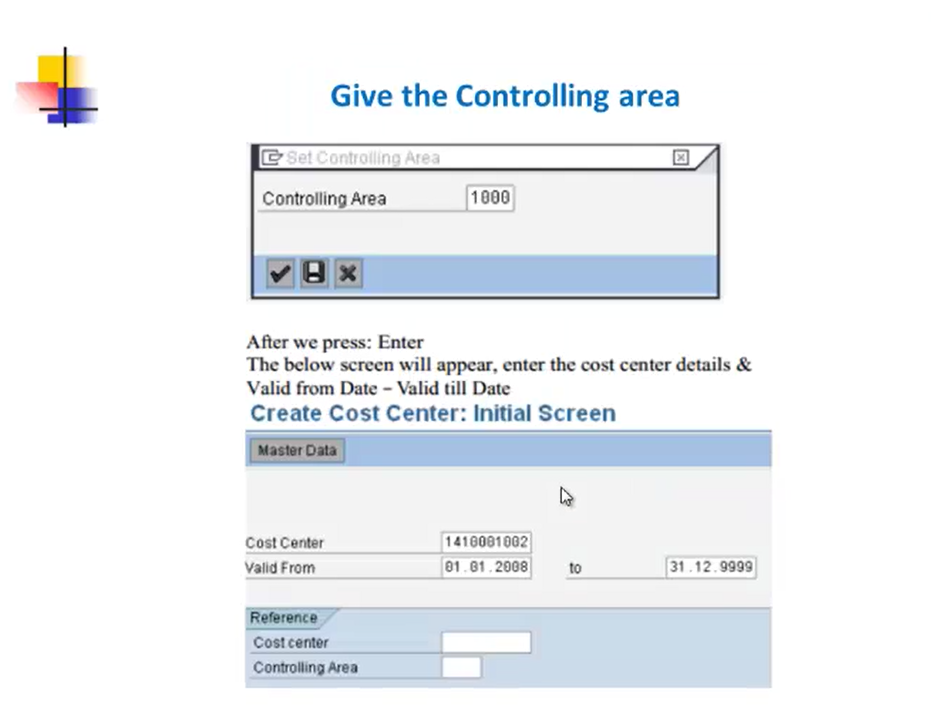
- Maintain Basic Data: On the next screen, we’ll fill in the Basic Data for the cost center, such as person responsible, user responsible, department, cost center category, etc.
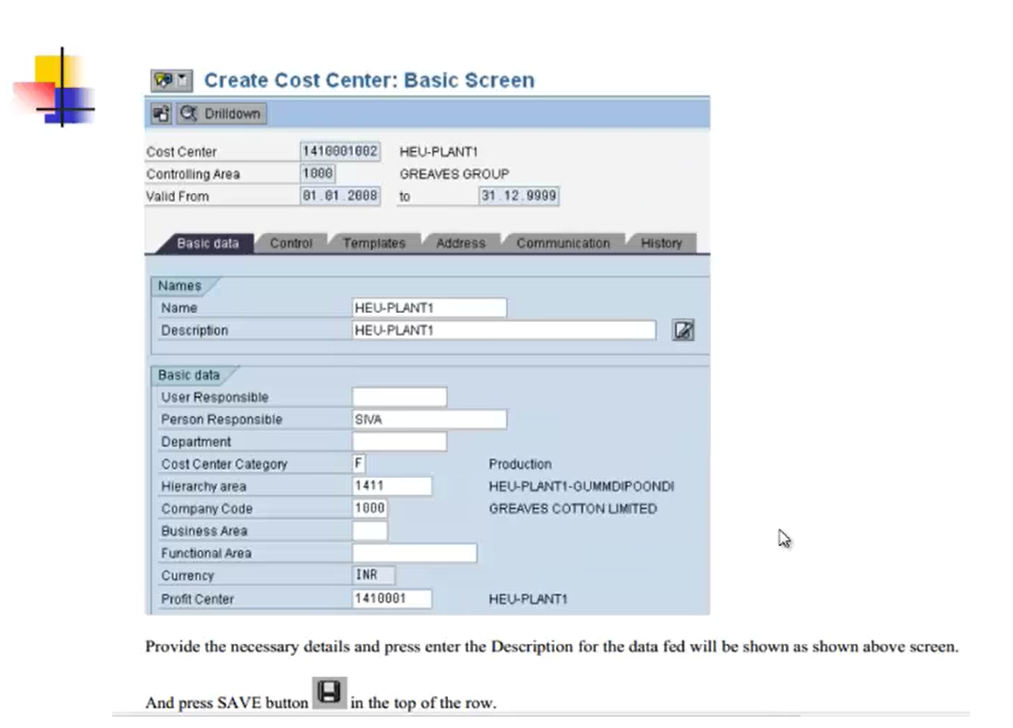
- Save: After providing all the necessary details, we’ll click the Save button to store the cost center master data.
What is a Cost Center Group?
A cost center group allows you to collect and categorize cost centers based on various criteria. This enables us to:
- Use the cost centers to depict the structure of the organization in an SAP system
- Build cost center hierarchies, which summarize decision making, responsibility, and control areas according to the organization’s specific requirements. The individual cost centers usually form the lowest hierarchical level.
Transaction Codes for Cost Center Group Management:
The transaction codes for managing cost center groups are:
- KSH1: Create
- KSH2: Change
- KSH3: Display
Creating a Cost Center Group:
To create a cost center group:
- Similar to the cost center, navigate through the SAP Easy Access menu path and click on the transaction code KSH1, or directly enter the transaction code in the command field.
- Provide the cost center group name.
- Click on the Maintenance button or press the Enter button as shown in the screen below. This will give a display screen showing the details of the cost center group, including its main groups and subgroups (e.g.,1486, 1489, 1490) containing multiple individual cost centers.
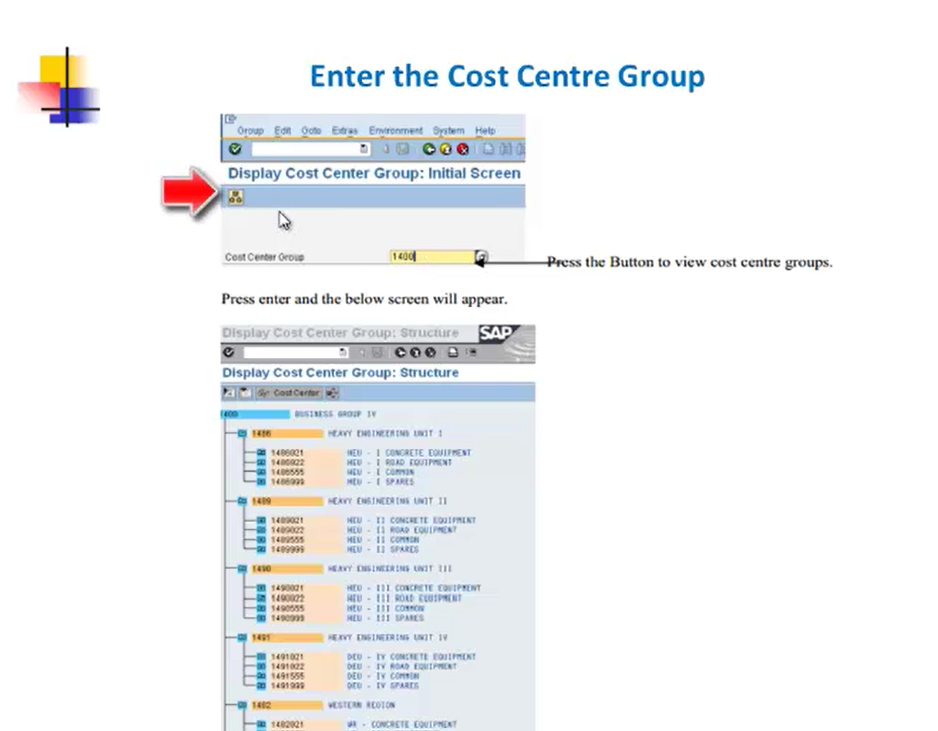

Posting Keys in Financial Accounting
A Posting Key is a two-character numerical key that controls the entry of line items in financial transactions. The posting key determines the account type, the debit and credit posting, and the layout of the entry screens.
Key Functions of Posting Keys:
The Posting Key is a critical element because it determines:
- The account type
- Debit/Credit Posting
- The layout of the entry screens
Posting keys apply across all company codes and are critical to workflow processing for both profit and cost centers. When you enter a financial posting, you must specify a posting key for each item, which then dictates how that item is processed, how data is updated, and what data you can enter.
Uses of Posting Keys
When you enter a posting, you must specify a posting key for each item. This key determines how the item is posted, including the data we can enter in the line item, how the data is processed, and how the system updates the data we entered.
Posting keys are differentiated by customer, vendor, and General Ledger accounts. Apart from the General Ledger Accounting (FI-G/L) and Accounts Receivable and Payable (FI-AR/AP) components, there are also posting keys for assets and material accounts. The image below shows the posting key, together with the account number, which controls posting at the item level.
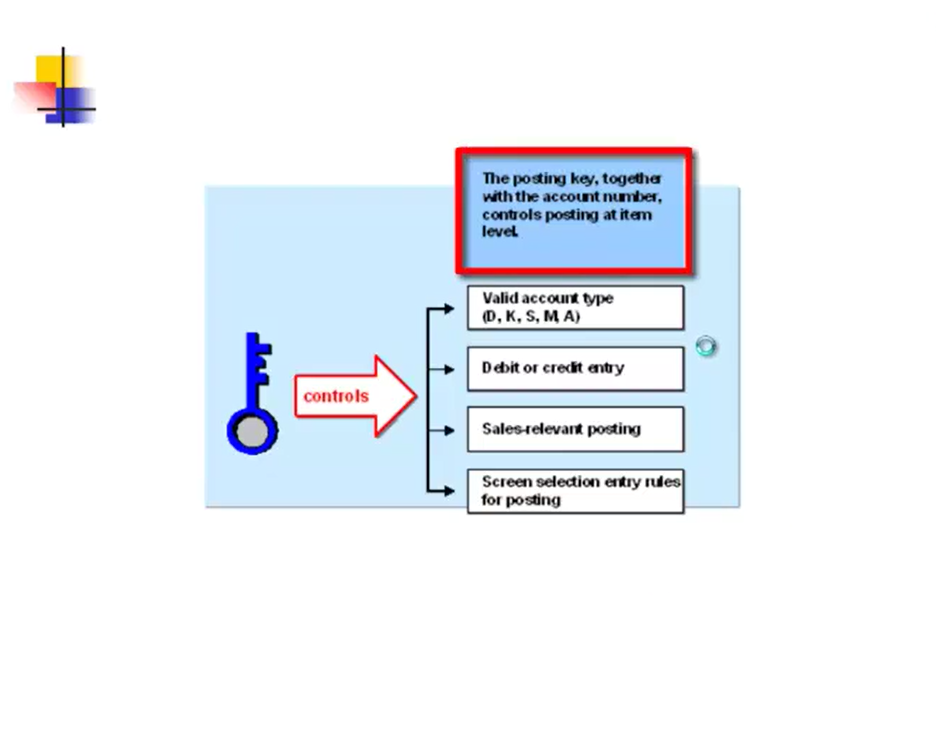
We have a range of posting keys (e.g., from 01 to 99), and these posting keys can be debited or credited into the line items. In the images below is a list of the posting keys.
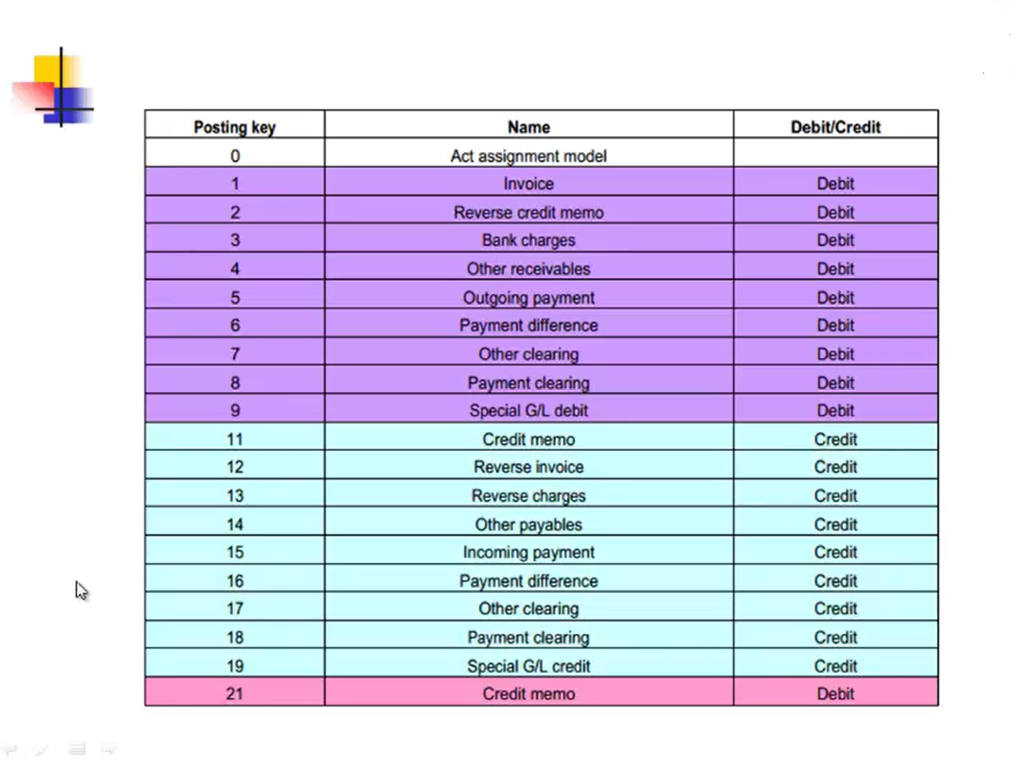
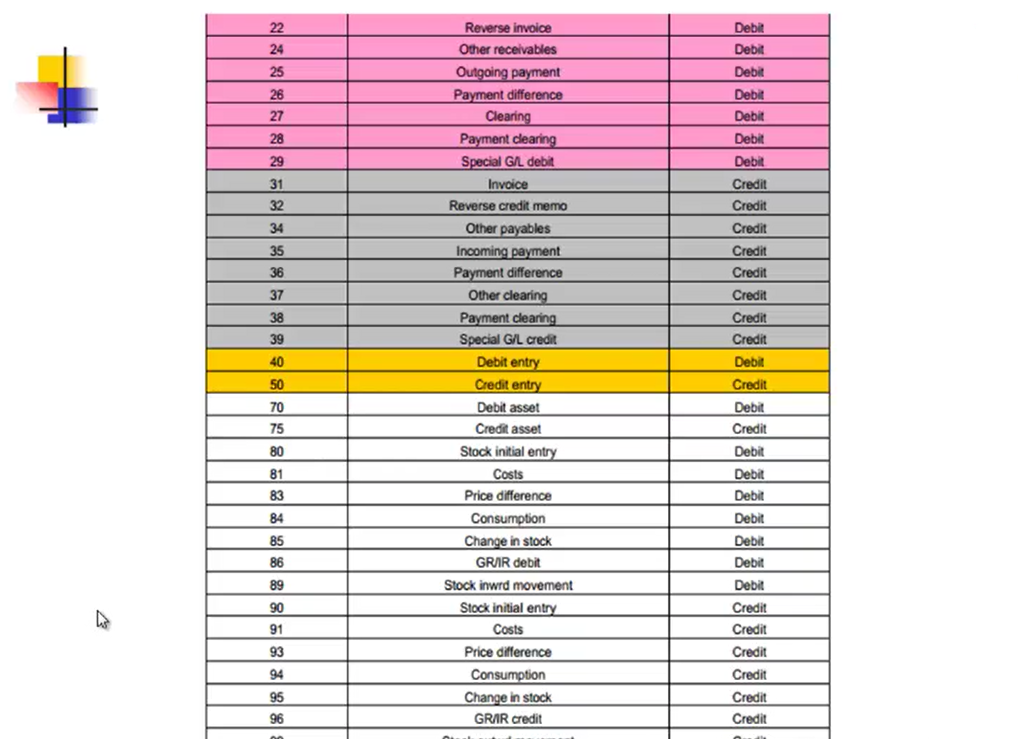
Document Types in Financial Accounting
Similar to posting keys, Document Types are another essential control mechanism in SAP Financial Accounting.
A Document Type is a two-character code used to categorize financial transactions in SAP. Document types are valid for all clients. Each document type is assigned a number range, enabling unique numbering of financial documents. You can define various number range intervals for the same number range key based on the company code, providing flexibility in document numbering.
Document types apply to Financial Accounting, Material Management, and Sales and Distribution modules, such as:
Financial Accounting (FI):
- General Ledger (G/L) Accounting
- Accounts Receivable (FI-AR)
- Accounts Payable (FI-AP)
- Asset Accounting
- Consolidation
Materials Management (MM) and Sales and Distribution (SD):
- Goods Receipts and Issues
- Incoming and Outgoing Invoices
- Physical Inventory (stock taking)
- Invoicing
Below are some default document types:
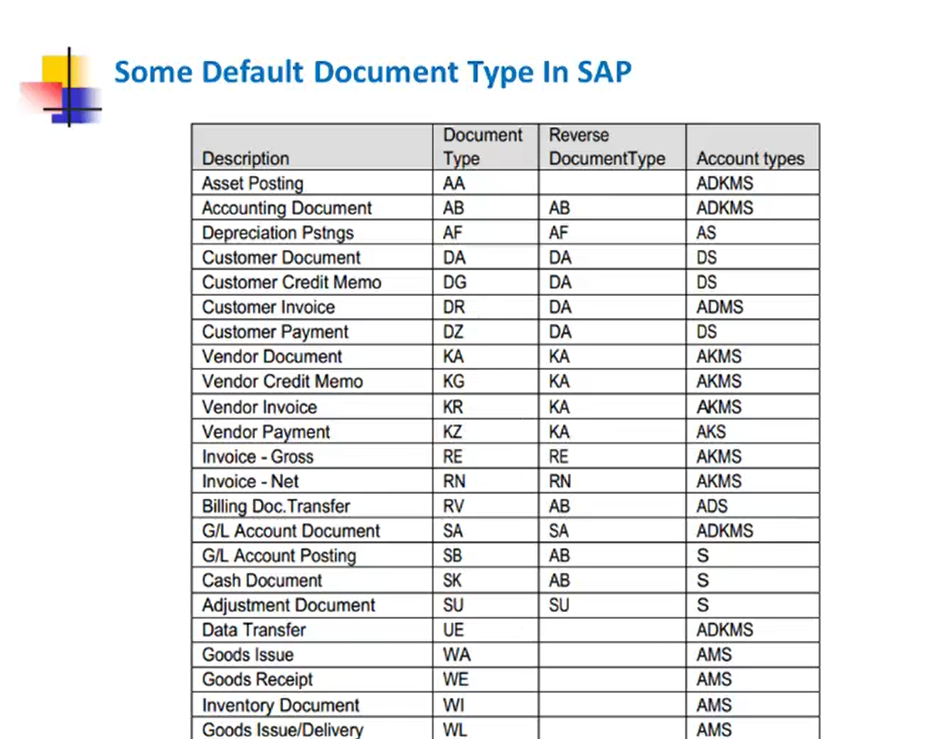
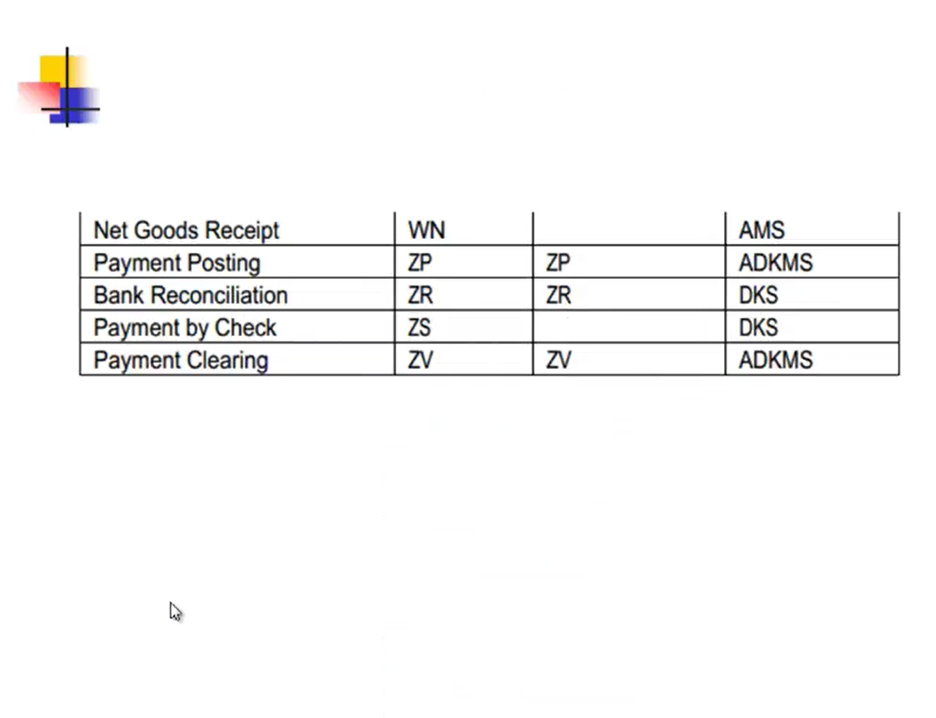
These document types ensure that each business transaction is correctly categorized, numbered, and processed according to predefined rules.
Summary of SAP FICO Overview
We’ve now come to the end of our comprehensive overview of SAP FICO. To recap, we’ve covered:
- The overarching purpose of the SAP FI module in meeting an organization’s financial needs.
- The distinctions and interconnections between Financial Accounting (FI) and Managerial Accounting (Controlling).
- Key FI components such as the General Ledger, Balance Sheet, and Income Statements.
- Managerial Accounting (Controlling) components and their internal reporting focus.
- The critical elements of the organizational structure: Client, Company, Company Codes, Chart of Accounts, Fiscal Year Variant, Credit Control Area, and Controlling Area.
- The functionality and creation processes for Profit Centers and Profit Center Groups.
- The functionality and creation processes for Cost Centers and Cost Center Groups.
- The role and importance of Posting Keys in controlling line item entries.
- The purpose and application of various Document Types in classifying business transactions.
This SAP FICO overview is essential for anyone looking to understand, implement, or work with SAP FICO to manage an organization’s financial and controlling operations.
